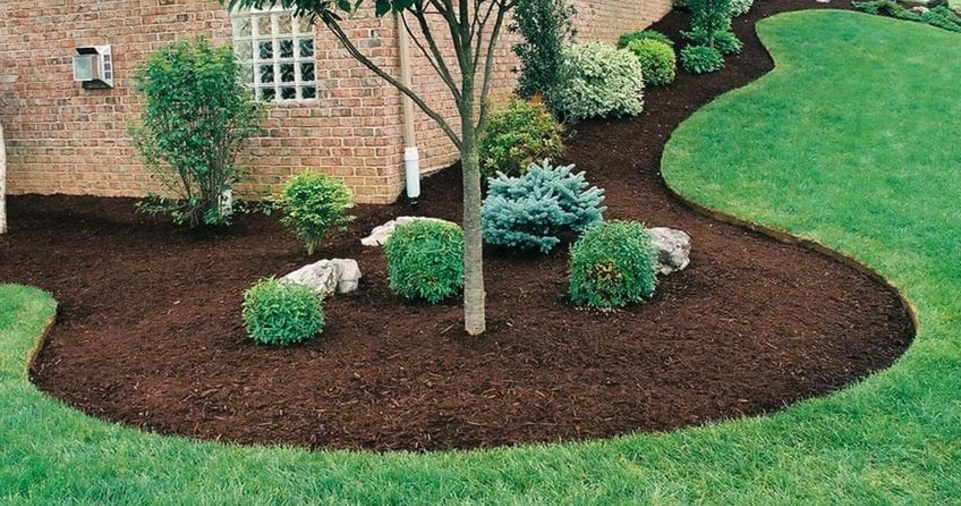Mulching is one of the simplest and most beneficial practices for a healthy, vibrant garden. It helps retain soil moisture, suppress weeds, regulate soil temperature, and add organic matter to the soil.
However, to maximize its benefits, it’s crucial to use mulch correctly. This guide will help you understand the types of mulch, their benefits, application techniques, and common mistakes to avoid.
Benefits of Mulching
Mulching offers numerous advantages, including:
- Moisture Retention: Reduces evaporation and conserves water, ensuring plants receive consistent hydration.
- Weed Suppression: Blocks sunlight, preventing weed germination and reducing the need for manual weeding or herbicides.
- Temperature Regulation: Keeps soil warm in winter and cool in summer, protecting plant roots from extreme temperature changes.
- Soil Health Improvement: Organic mulch decomposes and enriches the soil with essential nutrients, fostering a thriving ecosystem.
- Erosion Control: Prevents soil from washing away due to rain or wind, preserving the integrity of garden beds.
- Aesthetic Appeal: Enhances the appearance of garden beds, giving landscapes a polished and well-maintained look.
- Encourages Beneficial Microorganisms: Supports earthworms and microbial life, leading to better soil aeration and nutrient cycling.
ALSO READ: How to Design an Eco-Friendly Outdoor Space?
Types of Mulch

Mulch can be classified into organic and inorganic types, each offering unique benefits.
Organic Mulches (Biodegradable)
Organic mulches decompose over time, improving soil health and providing essential nutrients.
| Type | Benefits | Best Used For |
|---|---|---|
| Wood Chips & Bark | Long-lasting, attractive, improves soil structure | Trees, shrubs, pathways |
| Straw & Hay | Lightweight, adds nutrients, good for vegetable gardens | Flower and vegetable beds |
| Grass Clippings | Readily available, nitrogen-rich | Lawns, vegetable gardens |
| Compost | Enriches soil, promotes healthy plant growth | Flower beds, vegetable gardens |
| Leaves | Free, decomposes into rich humus | Around trees and shrubs |
| Pine Needles | Acidic, best for acid-loving plants | Blueberries, azaleas, rhododendrons |
| Coconut Husk | Retains moisture well, slow to break down | Tropical gardens, potted plants |
Inorganic Mulches (Non-biodegradable)
Inorganic mulches do not decompose and last longer but do not improve soil quality.
| Type | Benefits | Best Used For |
|---|---|---|
| Gravel & Stones | Durable, excellent for drainage, decorative | Xeriscaping, pathways |
| Black Plastic | Warms soil, retains moisture, suppresses weeds | Vegetable gardens |
| Landscape Fabric | Weed suppression, allows water penetration | Flower beds, around shrubs |
| Rubber Mulch | Long-lasting, repels insects, shock-absorbent | Play areas, pathways |
| Glass Mulch | Recycled, decorative, prevents soil erosion | Flower beds, artistic landscapes |
How to Apply Mulch Effectively?
Applying mulch properly ensures maximum benefits. Follow these steps:
Choose the Right Mulch
Select a mulch type based on your garden’s needs. Organic mulches are best for improving soil health, while inorganic mulches work well for decorative purposes and erosion control.
Prepare the Soil
- Remove weeds before applying mulch to prevent them from growing through the layer.
- Water the soil thoroughly if it’s dry to provide a strong moisture base.
- Add compost or fertilizer if needed to enhance soil nutrients and promote plant growth.
Apply the Correct Mulch Thickness
- Organic mulch: 2-4 inches deep.
- Inorganic mulch: 1-2 inches deep.
- Avoid piling mulch against plant stems or tree trunks to prevent rot and disease.
Maintain Mulch Regularly
- Replenish organic mulch every season as it decomposes.
- Fluff mulch occasionally to prevent compaction and allow air circulation.
- Check for mold or pests and remove affected mulch promptly.
ALSO READ: Long-Lasting Sustainability: A Guide to Eco-friendly Lawn Irrigation Systems
Best Practices for Different Garden Areas

| Garden Area | Recommended Mulch | Application Tips |
|---|---|---|
| Vegetable Gardens | Straw, compost, black plastic | Keep mulch a few inches from plant stems |
| Flower Beds | Bark, wood chips, leaves | Choose mulch that complements garden aesthetics |
| Trees & Shrubs | Wood chips, pine needles | Keep mulch 2-3 inches away from trunks |
| Pathways | Gravel, stones, rubber mulch | Use landscape fabric underneath to prevent weeds |
| Container Plants | Coco coir, compost, coconut husk | Apply a thin layer to retain moisture |
| Raised Beds | Straw, compost, shredded leaves | Ensure good airflow around plants |
Common Mulching Mistakes to Avoid
Avoid these pitfalls to ensure effective mulching:
- Applying Too Much Mulch: Can suffocate plant roots and lead to mold growth.
- Mulching Too Close to Plants: Can cause rot and attract pests.
- Using Fresh Wood Chips Without Composting: May deplete nitrogen from the soil, stunting plant growth.
- Ignoring Regular Maintenance: Mulch should be refreshed periodically to maintain effectiveness.
- Choosing the Wrong Mulch: Certain mulches may alter soil pH, affecting plant health.
- Not Considering Mulch Color: Light-colored mulches reflect heat, while dark-colored mulches absorb it, impacting soil temperature.
Eco-Friendly Mulching Practices
To practice sustainable gardening, consider these eco-friendly tips:
- Reuse organic waste: Use leaves, grass clippings, and kitchen scraps for mulch to reduce waste.
- Avoid dyed mulches: Some artificial dyes may contain harmful chemicals that can leach into the soil.
- Use local materials: Reduces transportation costs and carbon footprint while supporting local businesses.
- Opt for biodegradable mulches: Promote soil health over time and reduce landfill waste.
- Mulch with cardboard or newspaper: Layering biodegradable paper underneath organic mulch enhances weed suppression.
How to Choose the Right Mulch for Your Climate?

Your local climate plays a crucial role in determining the best type of mulch for your garden.
| Climate Type | Recommended Mulch | Why It Works |
|---|---|---|
| Hot & Arid | Gravel, wood chips, compost | Prevents water evaporation, retains moisture |
| Temperate | Bark, straw, grass clippings | Moderates soil temperature, prevents erosion |
| Cold & Wet | Pine needles, black plastic | Provides insulation, prevents excess moisture |
ALSO READ: The Role of Wallpaper in Contemporary Interior Design: Trends and Inspiration
Final Thoughts
Mulching is a simple yet powerful gardening technique that offers multiple benefits when done correctly.
By choosing the right mulch, applying it effectively, and maintaining it properly, you can significantly enhance the health and beauty of your garden.
Whether you’re growing vegetables, flowers, or maintaining trees, mulch is an essential tool for any gardener.






